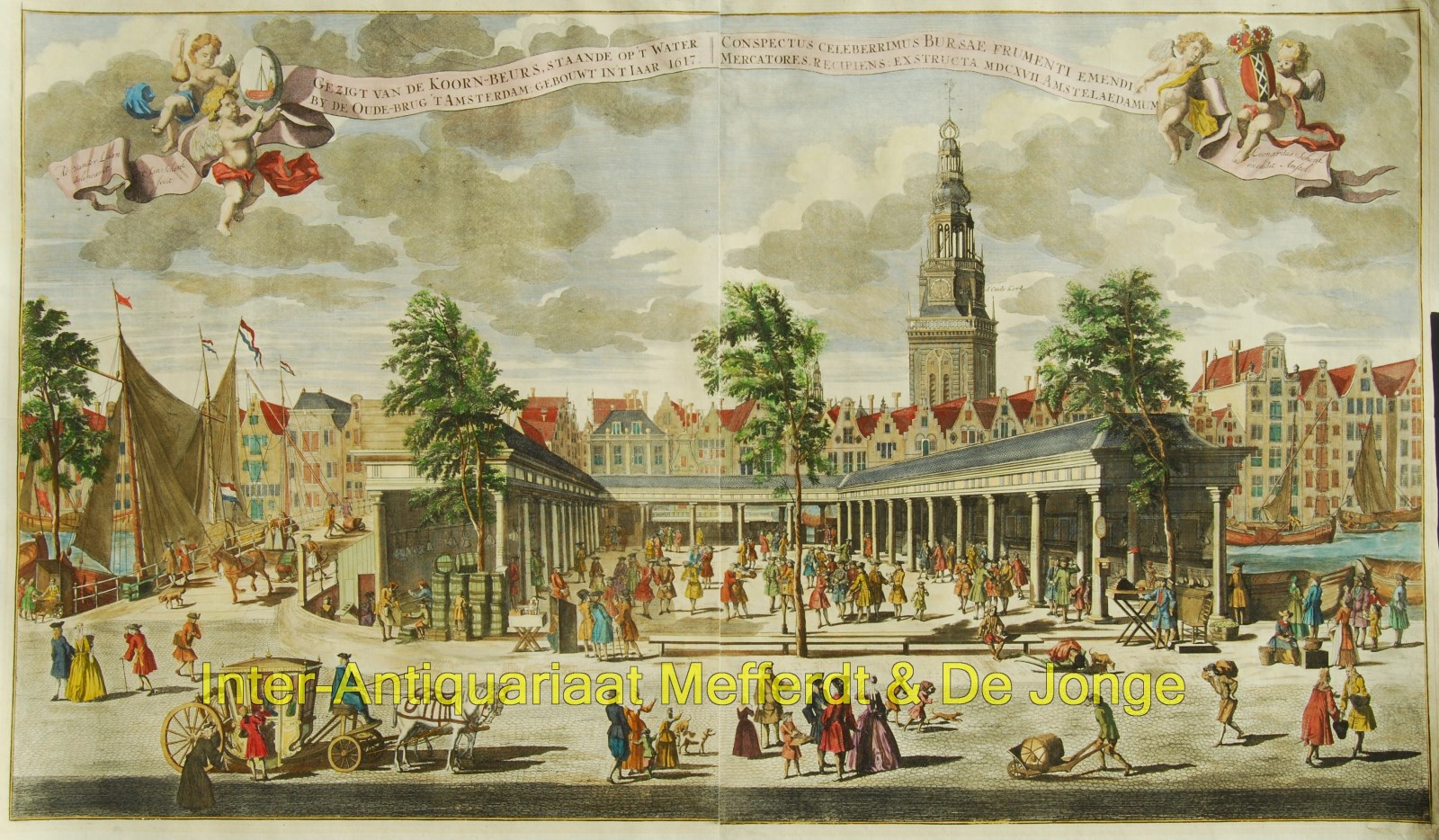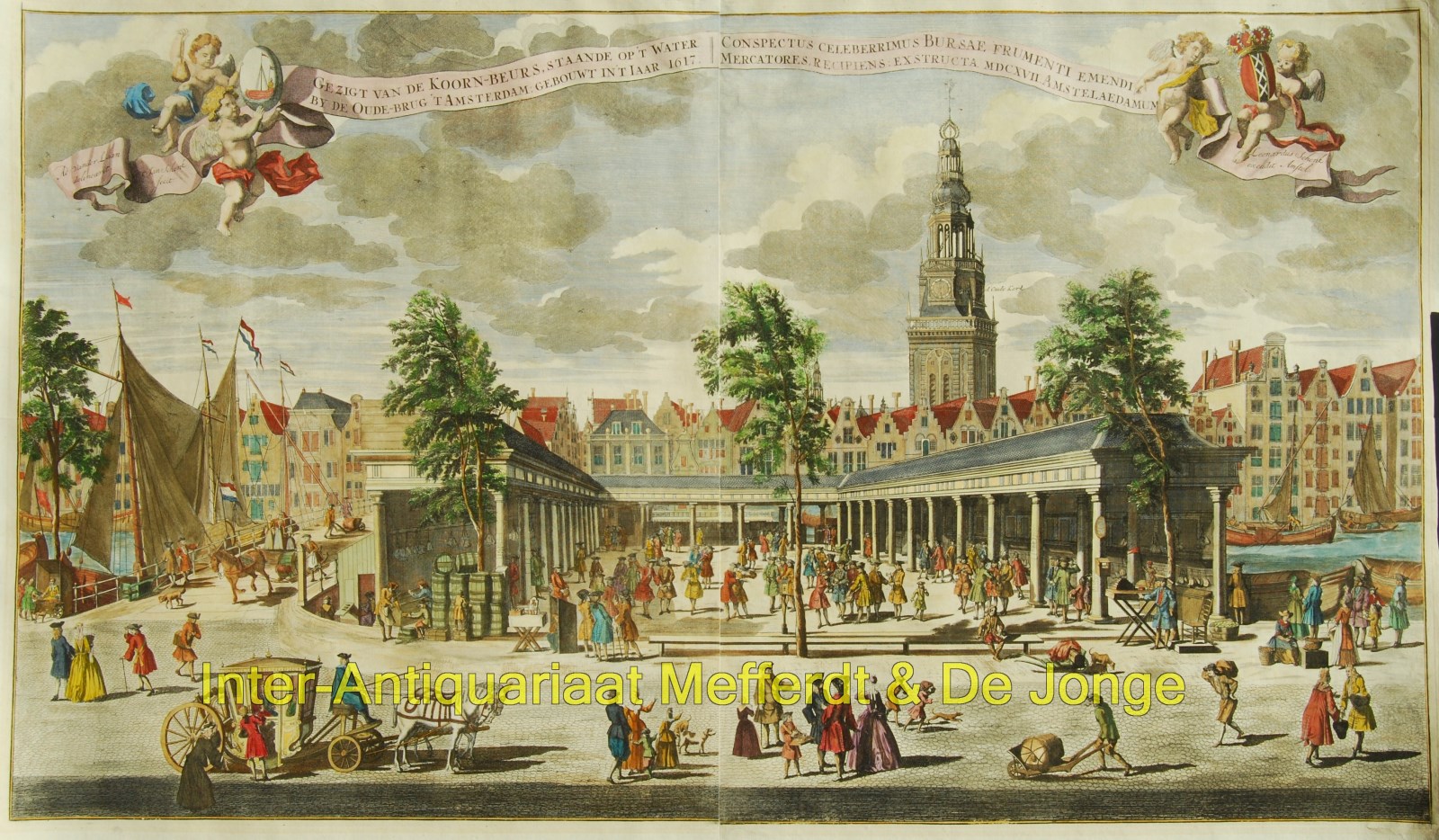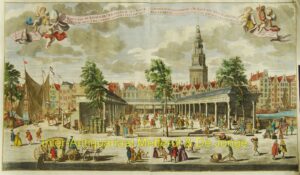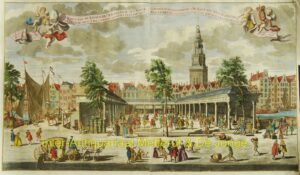LEVENDIG GEZICHT OP DE AMSTERDAMSE KOREN BEURS
“Gezigt van de Koorn-Beurs, staande op ‘t Water by de Oude-Brug ‘t Amsterdam, gebouwt in ‘t Jaar 1617“ Gravure gedrukt van twee koperplaten vervaardigd tussen 1751 en 1766. Gegraveerd door Jan Schenk naar een tekening van Adolph van der Laan, uitgegeven door Leon Schenk. Later met de hand gekleurd. Afm. 56 x 96 cm.
De economische groei van Amsterdam in de 17de-eeuw had gevolgen voor de organisatie van de handel. Beurshandelaren kregen in 1611 de beschikking over een eigen gebouw, zodat zij niet meer in de open lucht hoefden te vergaderen. Koren- en zouthandelaren bleven echter op straat bijeenkomen. Bij slecht weer schuilden zij onder de luifels van de winkels langs het Damrak, waarover winkeliers en bewoners klaagden.
Onder leiding van stadsbouwmeester Hendrick de Keyser, die ook de koopmansbeurs op de Dam had gebouwd, werd in 1616/1617 een aparte beurs voor graanhandelaren neergezet. Een houten gebouw op palen in het nog ongedempte Damrak. (Op de prent zien we links de Oudebrug en rechts de toren van de Oude Kerk.)
In de korenbeurs van Amsterdam werd het graan dat per schip uit de landen rond de Oostzee werd ingevoerd, doorverkocht aan handelaren uit heel Europa. De beurs bestond uit een vierkant plein, met gaanderijen op pilaren. Tegen de muren van de galerijen stonden kistjes die monsters van het graan bevatten. Kooplieden hadden goed licht nodig, omdat zij de monsters op kleur keurden. Graan dat daarbij op de beursvloer viel, mocht de marktmeester houden. Nadat een graanpartij was verkocht, zorgden de korenmeters en korenzetters er voor dat het graan verdeeld werd via door de gildes vastgestelde standaardmaten.
De beurs was het centrale bouwwerk van een reeks gebouwen die in de eerste helft van de 17de-eeuw in Amsterdam werden gebouwd voor de bloeiende handel, waardoor Amsterdam zich in de Gouden Eeuw tot de stapelplaats van Europa ontwikkelde.
In 1768 werd de korenbeurs herbouwd in steen. Dat gebouw bleef staan tot het in 1884 werd afgebroken. Thans staat hier de Beurs van Berlage (en verderop links het Centraal Station).
Prijs: 2.950,- (incl. lijst)





